#neolithic venus
Text
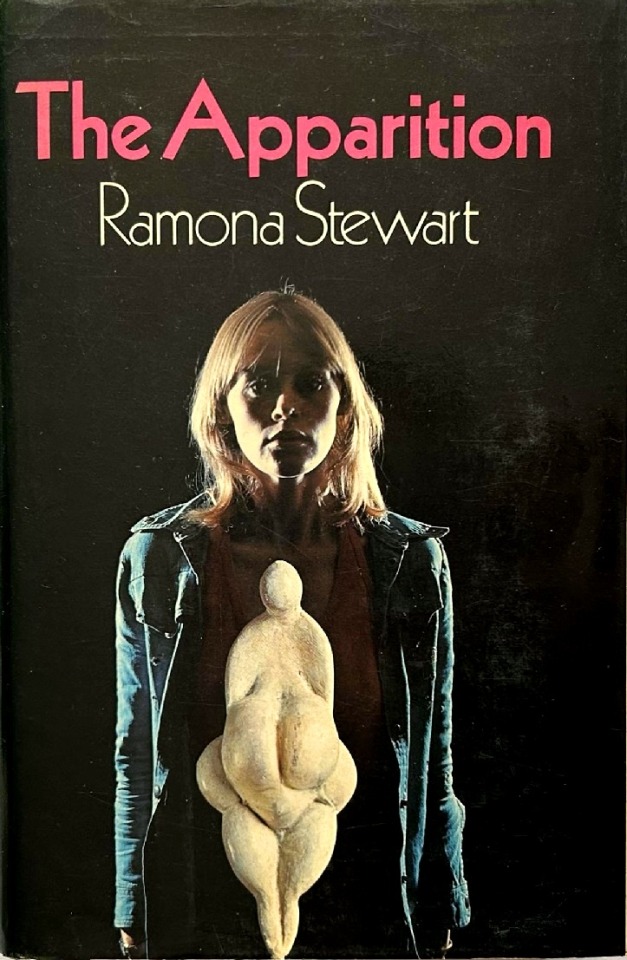
Ramona Stewart - The Apparition - Andre Deutsch - 1974
#witches#apparitions#occult#vintage#the apparition#abdre deutsch#ramona stewart#1974#neolithic venus
29 notes
·
View notes
Text
Time Travel Question 37: Ancient History XVII and Earlier
These Questions are the result of suggestions from the previous iteration.
This category may include suggestions made too late to fall into the correct earlier time grouping. Basically, I'd already moved on to human history, but I'd periodically get a pre-homin suggestion, hence the occasional random item waaay out of it's time period, rather than reopen the category.
In some cases a culture lasted a really long time and I grouped them by whether it was likely the later or earlier grouping made the most sense with the information I had. (Invention ofs tend to fall in an earlier grouping if it's still open. Ones that imply height of or just before something tend to get grouped later, but not always. Sometimes I'll split two different things from the same culture into different polls because they involve separate research goals or the like).
Please add new suggestions below if you have them for future consideration. All cultures and time periods welcome.
#Time Travel#Ancient History#Thera#Crete#Tekhelet#Jewish History#Fashion History#Troy#Western Asia#Ancient Greece#Greek Mythology#Gilgamesh#Sumer#Western Asian History#Pilipili#Trans History#Queer History#History of Religion#Venus of Willendorf#Neolithic#Early Humans#Chinese History#Wu Zeitan#Friesenhahn Cave#Homotheriums#Mammoths#Hominins#Dionysius#Greek Religion
105 notes
·
View notes
Photo
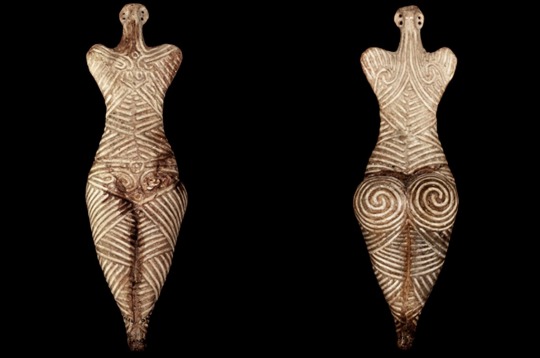
Female figurine (known as the Venus of Draguseni).
Cucuteni Culture -c. 6,500 years old, Neolithic Period.
Fired clay , Dimensions:, 20 cm height.
Found in the hills around Drăguşeni (Botosani) northeast Romania.
Courtesy: Botosani County Museum.
#art#sculpture#female#figurine#venus#draguseni#cucuteni culture#neolithic#archeology#clay#botosani#romania#botosani county museum
619 notes
·
View notes
Text


Inktober day 3 - Neolithic fertility goddess human makeover
#art#drawing#sketch#artist#art history#ancient#ancient history#ancient art#neolithic#goddess#fertility#fertility goddess#Venus#makeover#human#humanized#inktober#art challenge
12 notes
·
View notes
Text
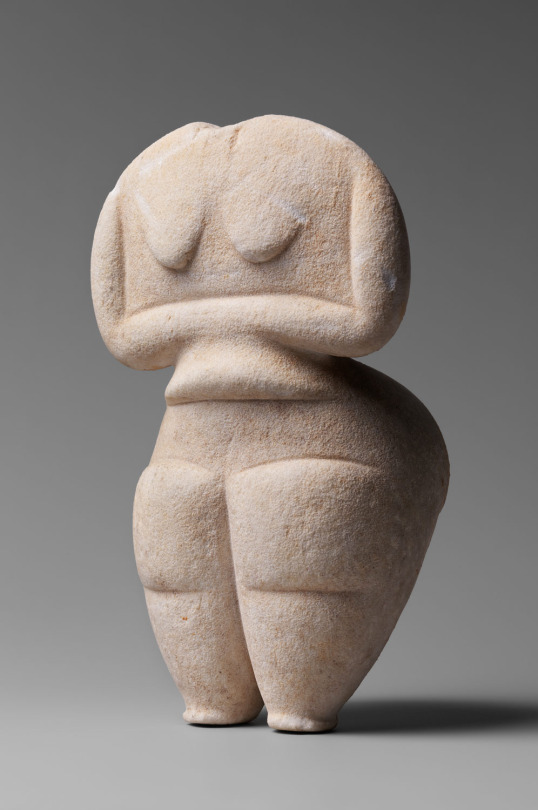
#ancestors#ancient history#ancient humans#neolithic#mesolithic#paleolithic#archaeology#hunter gatherer#Venus
4 notes
·
View notes
Text
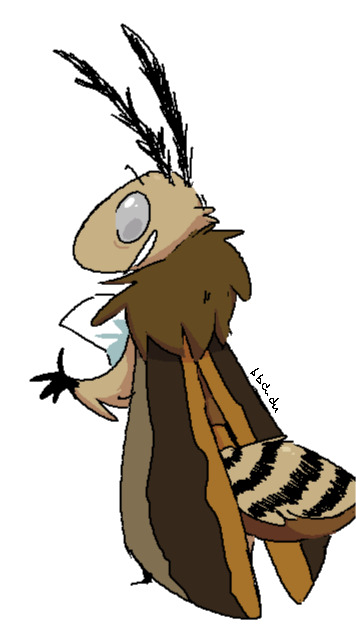
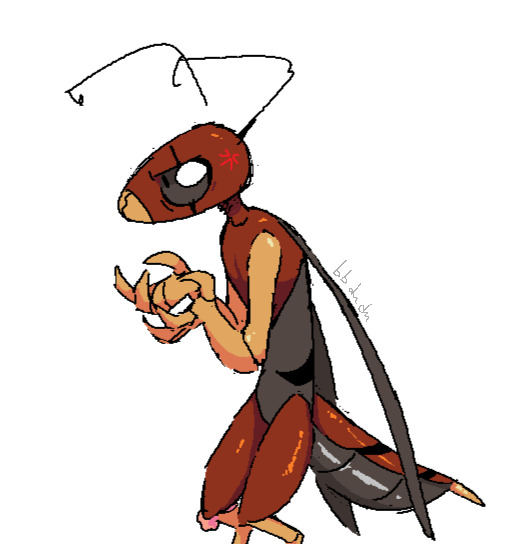

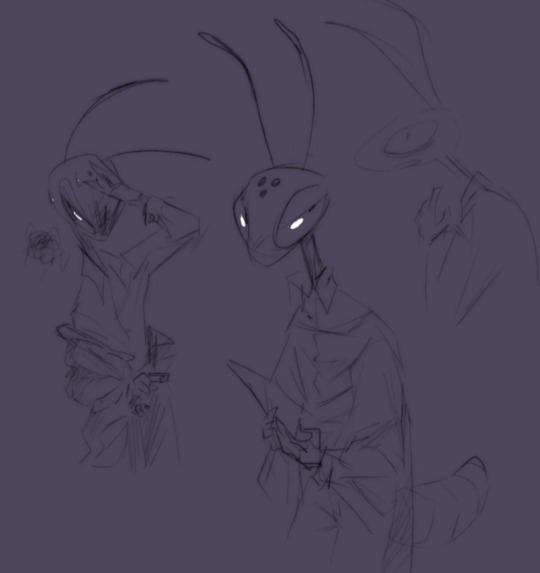
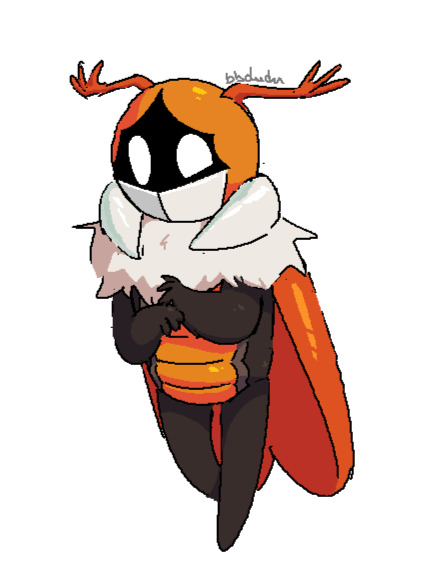
#bug fables#bug fables zasp#bug fables neolith#bug fables aria#bug fables venus#bug fables fanart#my art#bug-does-art-2023
138 notes
·
View notes
Text
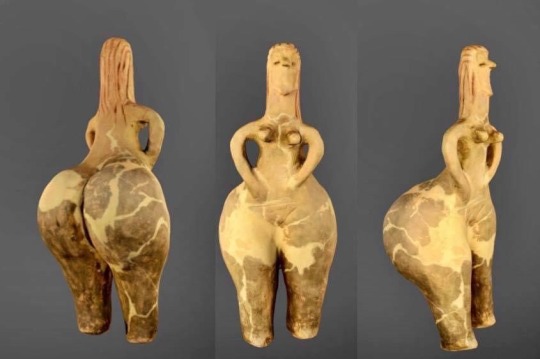
Neolithic Venus figurine called "Red hair goddess", terracotta, Starčevo culture, around 6300 - 5500 BC
7K notes
·
View notes
Text
#994: Hogwarts Inquires - 117
Did you know? - 18
The text on the Boards from the Undercroft:
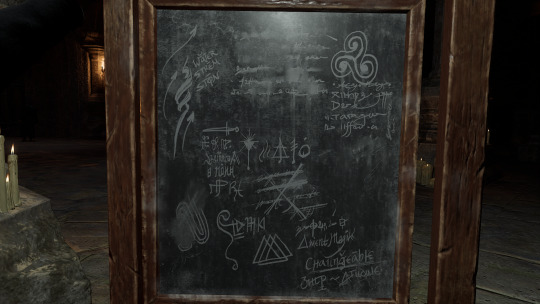
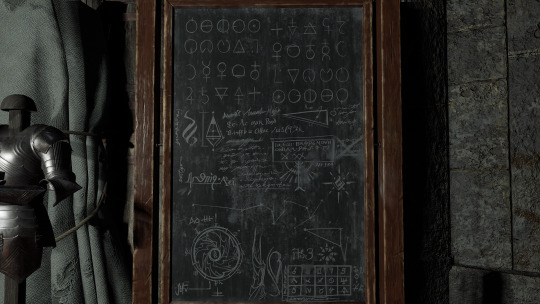
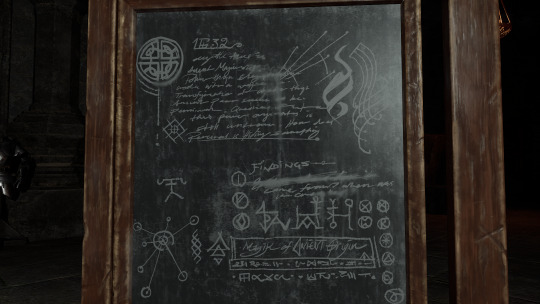
appears before the In the Shadow of the Estate quest.
Few attempts on text legibility were made here and in the reblogs of that post. And no, these notes do not belong to Sebastian -- it is a headcanon.
We do not know the author. Howevor, Isidora is the most probable candidate for the authorship due to the name 'Percival' appearing but the what is likely a timestamp, 1632, veils on that probability, if to assume it is a timestamp, of course. It might be not. We don't know.
Interestingly, the artist tasked to fill up the boards wrote the spellings of the Middle English words: weter, strem, ston, chaungeable.


Diacritical marks were not widely used in the writings done in this language, if at all. You can read about it in more detail here.
These symbols are the triskelion and the valknut:
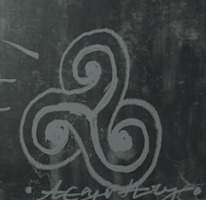

The latter although predates the Viking era, may not be as old as the former; the former is common in many of ancient art, going as far deep into the ancient history as Helladic and Mycenaean eras of the Ancient Greece and the neolithic mound in Meath, Ireland. Weirdly, the stone objects MC can throw with magic have blue-ish carved symbols on their surface; the carvings look somewhat distinctly Pictish, the choose for colour therefore sounds… like it's Let's Throw Everything Ancient To The Region To The Greater Mix Of Things.
This knot:

is the doire / dara knot; symbolises the oak tree, perhaps the most sacred among Celtic people.
This bit could be important to remember: according to this website, Oak's astrological period starts at June 10 and ends at July 7.
These:

are half Alchemy symbols for basic elements (tin, lead, silver, gold, mercury, etc), half transfiguration alphabet as seen from this image:
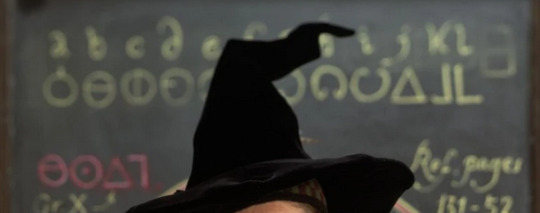
This little fella is Saturn/lead:

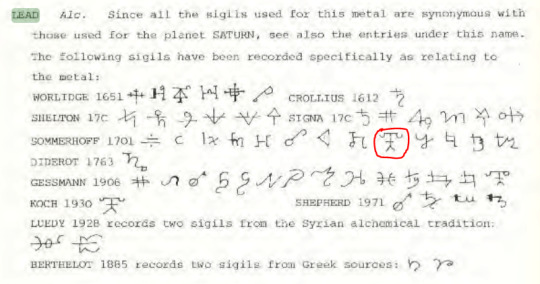
The congregation of the points at the lower left eludes me but the number of points is 7 and the number 7 appears on the end point of the dimensional door aka the wall MC and Sebastian appear at after they are teleported back to the Undercroft from the Isidora's estate:
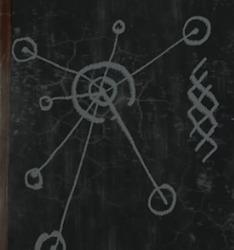

Perhaps it tells us Isidora had 7 hideouts and not 3? Besides, the number 7 is the number of the planets corresponding to the 7 metals:
Sun - Gold - ☉
Moon - Silver - ☽
Mercury - Quicksilver - ☿
Venus - Copper - ♀
Mars - Iron - ♂
Jupiter - Tin - ♃
Saturn - Lead - ♄
Uranus, Nepture, and Pluto aren't a part of Alchemy due to a very simple reason: by the time Uranus was officially discovered in the 1781, Robert Boyle had already published the book The Sceptical Chymist: or Chymico-Physical Doubts & Paradoxes, in 1661. He'd effectively removed the word 'Alchemy' from the use and replaced it with the word 'Chemistry', thus also avoiding the confusion between branches of Alchemy that did research on various materials (that includes spagyric teachings; Paracelsian physicians were the people turning poisons into cures and remedy) -- and what people inspired by Hermes Trismegistus developed smooshing many different things together, such as philosophy, alchemy, astrology, etc, creating a wtf.
I'd say it gives geodesy but may also be a weird depiction of the sal commune err common salt:


What to say about these I can't decide, but they look like ~compound names for various alchemical substances, from left to right: Spiritus Fumans (Stannic Chloride), Aqua Tofana (the infamous tasteless belladonna poison), and Verdigris (Carbonate of Copper, once used as a green pigment; was mildly toxic):
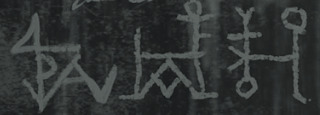
What it's supposed to mean eludes me, besides, it is an assumption.
What I suppose it should mean: something Isidora, if that belongs to her, found; all things besides Verdigris were discovered after her death in the late 1400s, however, there is a person who could've been trying to decipher… these things.
In the In the Shadow of the Undercroft quest Sebastian mentions:
No, someone in his family knew about it [the Undercroft]. The Gaunts are full of secrets.
That Gaunt should've been alive in 1632, assuming it is a timestamp. They also needed to be at school at the time, so could be a professor, a member of the staff (a gamekeeper, for example), a Headmaster; unlikely it was Corvinus Gaunt, who was a student by the time the castle would receive plumbing update (late 17th--early 18th century).
'Aura? Ancient Magik' has to become my favourite kind of explaining things to meself because I, too, have no idea what this means:

I can only tell some text is in Greek. An attempt to type after this bit yielded some results:
Ιαεω is probably Ιασω, recovering&recuperation;
ΒαθρεμονΝΟΝΙΛα is probably βαθμολογία, a degree of smth or a grade;
ρπδ is a greek numerical for 184;
φ, a golden ration mention?;
πδ has to do with the Ptolemy's table of chords?
May not be linked to the much speculated Ancient Magic's capability of healing anything but more so of a celestial body's movement, tied, anyhow, to the Magic's power. Probably.
Speaking of which, Is this the constellation of Lacerta? The number of stars doesn't match, however. Lacerta has 9, this one appears to have 10 or 11; likely 11 + it has a satellite constellation of just 3 stars. I summon astronomy nerds to solve this one + the text and the table below is likely have something to do with Astronomy. I might also suggest: weirdly drawn Draco.
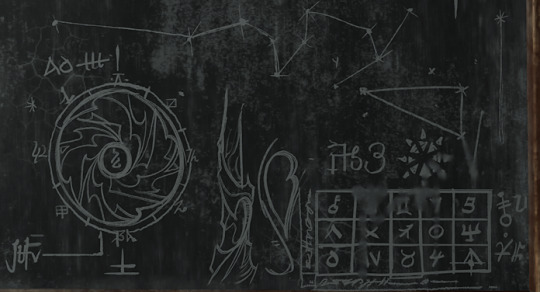
#днявочка#днявочка: hlegacy#днявочка: игры#hogwarts inquires#eng tag#hogwarts legacy#sebastian sallow#ominis gaunt#hogwarts did-you-knows#днявочка: screencaps
42 notes
·
View notes
Text
Pinterest just took down my pin of the Venus of Willendorf / Nude Perspective of the Self post for being "adult content". It was a neolithic statue. And a grainy photograph that allegedly contains a female presenting nipple, but like, for scientific purposes. You've all seen it.
The appeal link was broken too
19 notes
·
View notes
Text
The flat stomach was not always an aspect of the ideal female form. Idealized women’s bodies in artistic representations tended to be symmetrical. However, rounded or fleshy (rather than flat or muscular) abdomens were the norm in ancient and Renaissance art
i was reading cultural encyclopedia of the body and it said this but idk if its like...true? like. here are some results for ancient greek statues of naked women
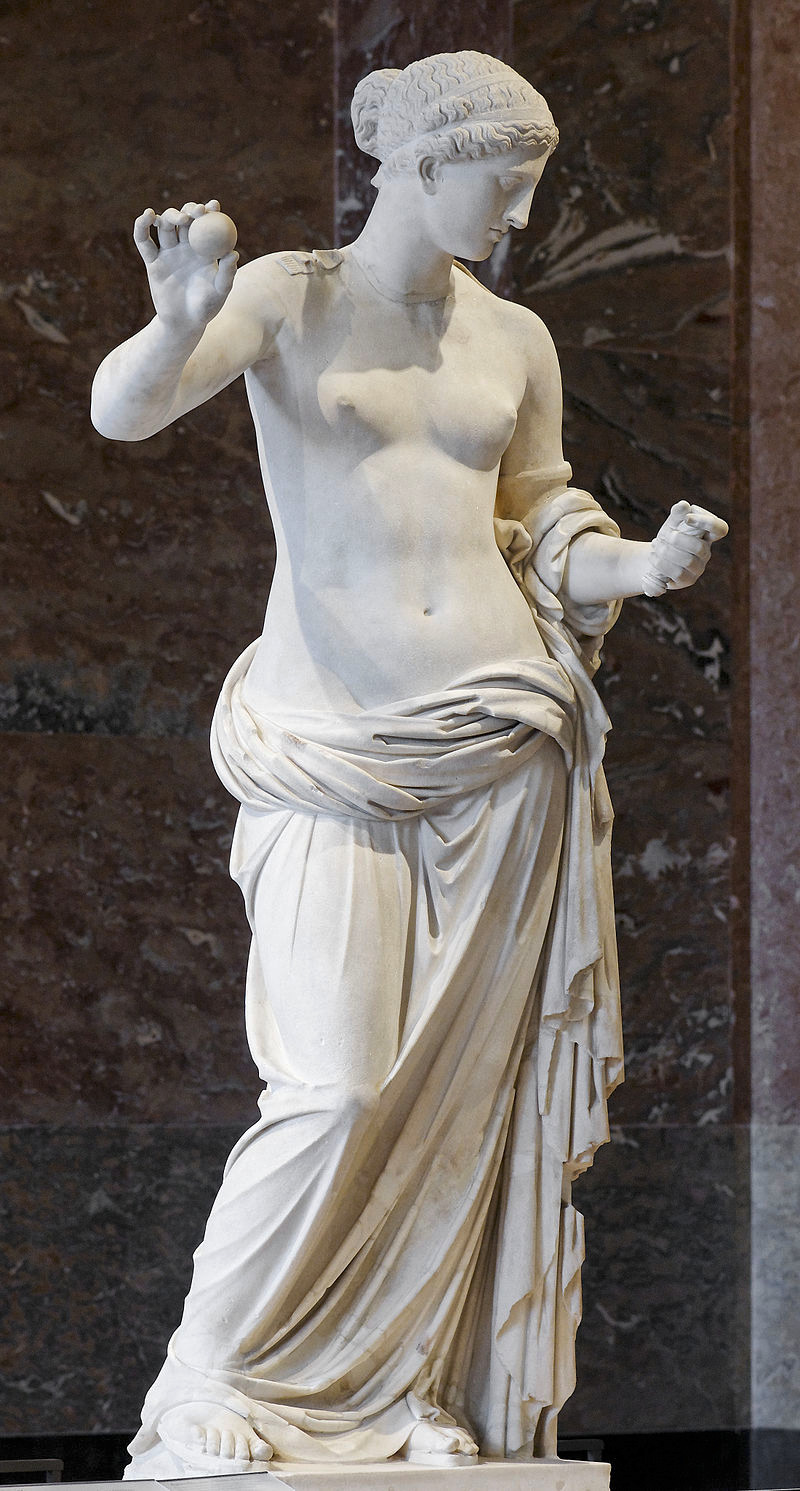
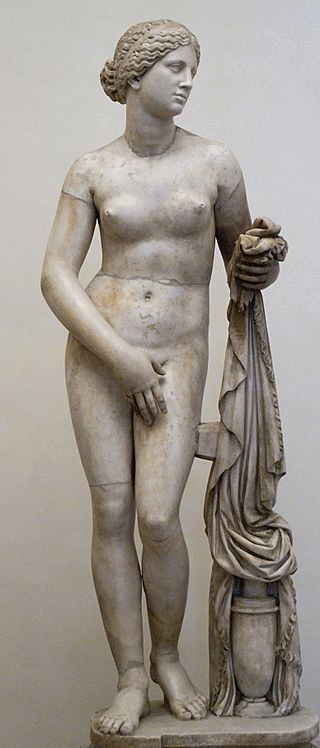
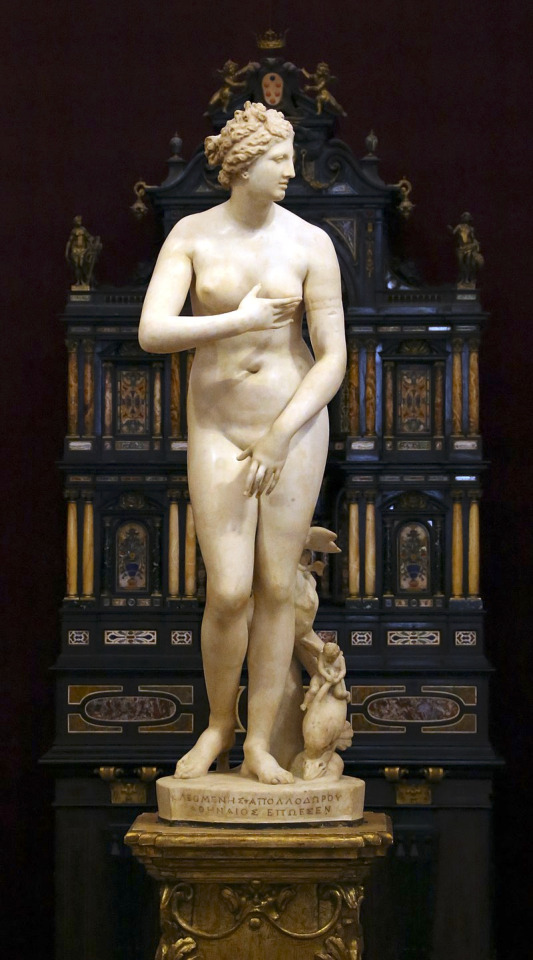
note their stomachs! pretty flat!
and its not just venus (as above). bam, ishtar!
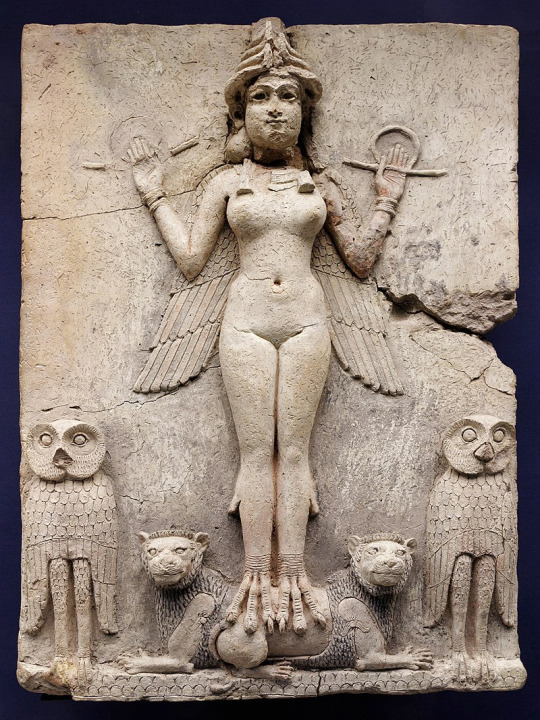
this article mentions crouching venus, who doesnt totally have a flat stomach?
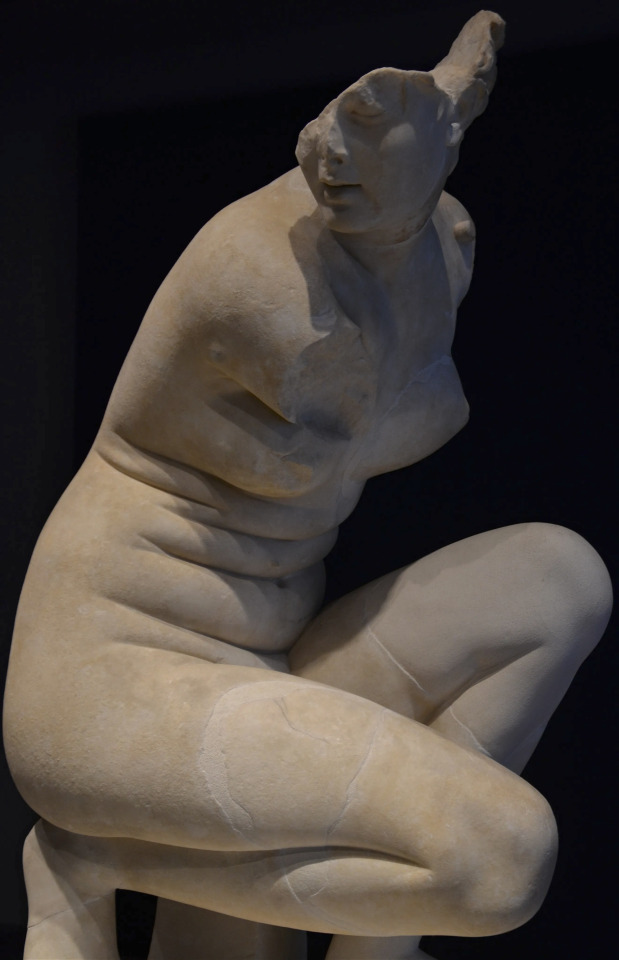
but like. literally everyones stomach looks like that when they crouch. and bend over. i think this is still unambiguously someone with a flat stomach!
i mean there definitely were neolithic statues without flat stomachs. but they seems strangely uncommon after that!
30 notes
·
View notes
Text
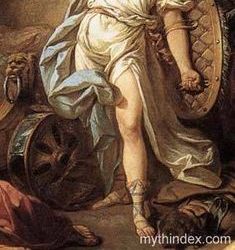
Sai Vikhe
Source
Sai Vikhë is the Janya of courage and of battle. Her planet is known in Telluria as Mars. She is the Janya of warrior-maids and rules all the Vikhelic Arts, and also such things as surgery, where a cut must be made in order to heal. The Holy War (Vikhail), which in physical terms is war against those who would destroy or harm the Empire, is only the lesser holy war. The greater holy war is that fought by the spiritual maid against the false self and against the forces of darkness and materialism in one's own soul.
Sai Vikhë is, of course, profoundly necessary to the "economy" of manifestation. Conflict is a condition of manifestation. It is from the agitation and conflict-play of the three gunas and the four elements that a manifest universe can exist. But while conflict is necessary, so also is harmony, represented in one aspect by Sai Thamë, and in another by Sai Sushuri (said to be the sister of Sai Thamë). As manifestation progresses on its outward and fundamentally degenerative course, the element of conflict increases and that of harmony decreases (this is observed in the axiom of modern physics: "entropy tends to increase").
Sri DurgaThus the metal of Sai Vikhë, iron, is also the metal symbolising the last of the four ages of a world-cycle, the Age of Iron, or Kali Yuga, traditionally known as "the age of quarrels". The sign for Mars (and Iron), is also the sign for masculinity, thus it is natural that in the Age of Iron, the masculine principle should come to the fore in human society, both in its social order and in its spiritual conceptions. We know relatively little about civilisation before the dawn of the Kali Yuga, but from hundreds of thousands of artefacts discovered at a large number of neolithic sites, three things are clear beyond any dispute:
1) These were civilisations, despite the misleading appellation "stone-age" — they were well-ordered cities with multi-story buildings.
2) The great preponderance of human depictions, especially those of a religious nature, are clearly female. We leave aside the question of "matriarchy" — that is, of whether women actually ruled in a temporal sense, a hypothesis that has caused much consternation among both male historians and victim-complex feminists. What is unarguable is that these societies were clearly massively culturally oriented toward the feminine.
3) There are no signs of war. Both fortifications and weapons of war (as opposed to hunting) appear at a later stage, along with depictions of warlike activity and masculine god-figures. This is quite clearly not because the neolithic civilisations were incapable of building fortifications. They had elaborate palaces, harbour installations and advanced transportation. They simply had no need for them until the "patriarchal revolution" of the Age of Iron.
In Telluria femininity and masculinity are governed by Sai Sushuri (Venus) and Sai Vikhë respectively, indicating a pivot between concord and discord. In Aristasia, blondeness and brunetteness are governed by Sai Sushuri and Sai Thamë respectively; the pivot being more between mercy and rigour, love and duty, indulgence and strictness.
Nonetheless Sai Vikhë is an universal principle necessary to the fullness of any manifestation — from the primal discord necessary to manifestation itself, to the various forms of "surgery" necessary in the pursuit of earthly life, to the need for defence against foes both physical and spiritual, Sai Vikhë is always with us.
In the Indian tradition the image of the warlike Sri Durga on her lion or tiger is the primary image of Sai Vikhë, and it is this form that many of us turn to her as the Great Protectress. Like all Janyati, she is at once a separate stream of Godhead and, at Her source, Dea Herself.
6 notes
·
View notes
Text
i found this awesome artist Libor Balák who paints a lot of prehistoric reconstructions for museums etc. i did already know some of his paitnings but wasn't aware what his name is... he deserves to be recognised for his works... so here are his reconstructions of the Lengyel culture taken from his website (one of my favourite cultures btw)
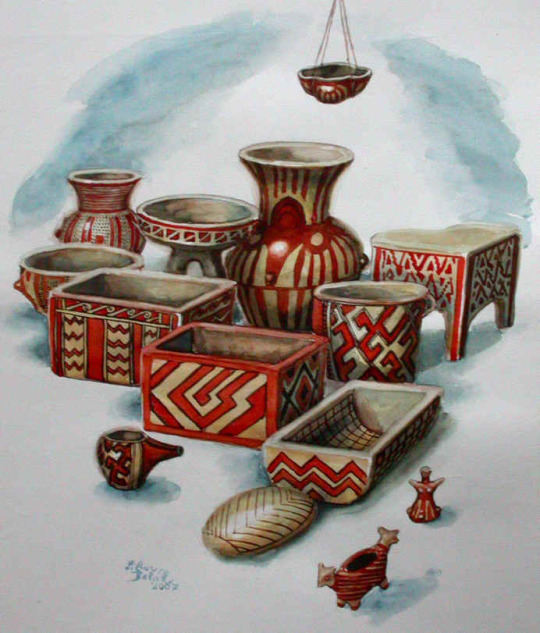
This Neolithic culture has left a distinctive archaeological signature centred in southern Moravia, but also included southwest Slovakia and adjacent parts of Austria and Hungary. Temporally belongs to late Neolithic – about 5000 B.C.
Colourfully decorated ceramics constituted a distinct element of this culture, which subsequently spread into northern Poland, Bohemia and central Germany. Apart from pots, ceramic spoons, ladles, cubic lamplets and models of various objects and structures are known from southern Moravia. This society also possessed advanced agriculture.

Model of a small dwelling is transformed into reality
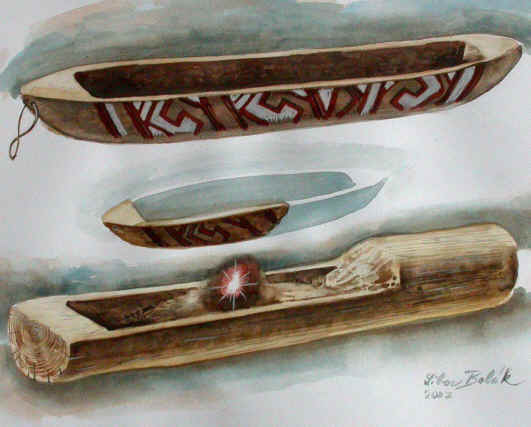
Ceramic fragment labelled as a ship is transformed into watercraft decoration – a monoxylon manufactured from a single piece of tree trunk

The meaning of the nakedness of the figurines is also controversial; some of the figurines could have had clothes painted on them..
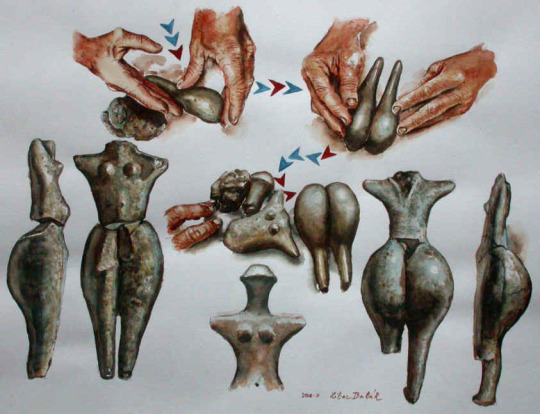
The painting displays the technological stages of Venus figurine manufacture
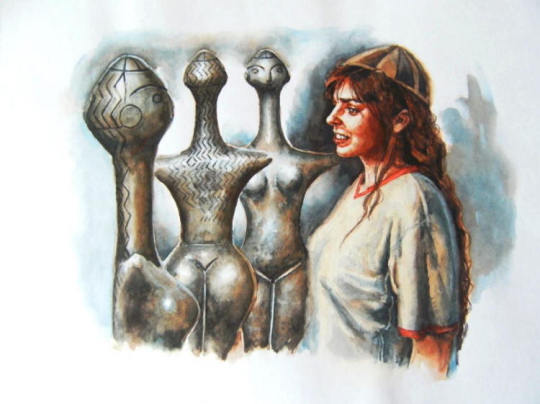
The Middle European Lengyel statuettes are first of all of a high handcrafted quality and very decorative. The shapes and patterns are taken over from the earlier statuettes. Some of them bear specific anatomical and ethnographic elements, such as the Venuse with schematic curly hair.

This statuette has schematic straight hair.
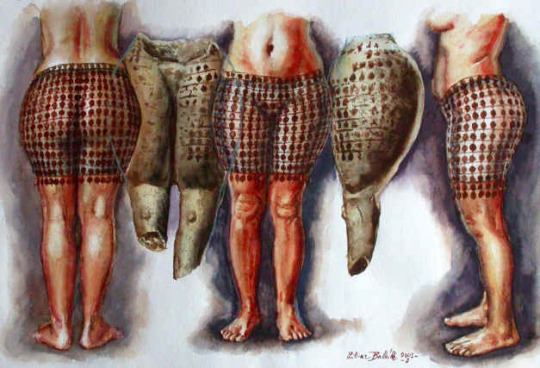
One of the many pieces of the Venus figurines from Neolithic era, found in South Moravia. This fraction has a preserved coloration with geometrical patterns.The figurine is uncomplete, it could also have had complet clothing.

The figurine of a woman in a skirt is decorated with ceramic lugs. The statuette could also be wearing a complete dress, not only a skirt on a bare body
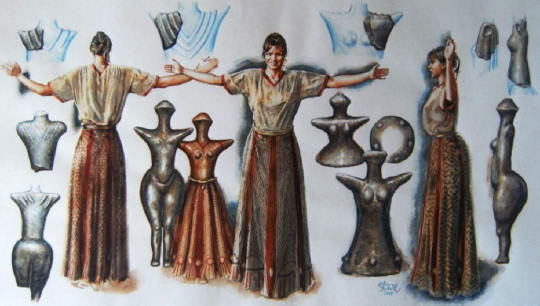
The reconstructive transformation on this picture analyzes the skew elements in the place of the shoulder blades – it could be draped textiles

On this statuette found in Austria we can see the preserved traces of the original painting. The interesting fact is also the hole between it´s tights. It could serve for interlacing of the waistcloth or, less probably, for fixing of the figure to the base; the fingertips would hinder the perfect fixing. The image represents the possibilities of the painting interpretation – the decorative leggings on the tights, tattooes, paintings on the skin and a necklace in the form of boar tusks. We can also see the decoration on the neck.
#lengyel culture#neolithic#archaeology#prehistory#stone age#figurines#female figurines#pottery#artefact#reconstruction#anthropomorphic figurine#my upl#Libor Balák#art#czech art
6 notes
·
View notes
Text

Neolithic Figurine Art
From left to right: 1. The Goddess Ishtar, Circa 3000 BC.; 2. Ftelia on Mykonos, Neolithic figurine; 3. Early Cycladic 2700-2300 BC.; 4. Goddess Figure Pakistan circa 2nd century BC.; 5. Venus Impudique (“immodest Venus”) c. 14,000 BC, from Laugerie-Basse, Vezerey in Dordogne); 6. Figurine, 800s BC Iran; 7. Cycladic figure, 3200-2000 BC., Greece.
6 notes
·
View notes
Text
Being autistic and fat is great because the lengths I will go to avoid being in an elevator with a person means that I will put my body, which was designed to be looked upon as a neolithic venus model and worshipped for its abundance, is instead put to the ordeal of going up eight flights of stairs and a very huffy/puffy conversation with a professor
#yknow that one scene in howl's moving castle when the witch of the waste is going up the stairs?#and sweats thru all her fabulous clothes?\#that's where im at rn but unfortunately I am also speaking to a professor.#good post good post#personal#AND im in a binder#transgender rights
4 notes
·
View notes
Text
Pagan/Occult timeline on this Tumblr
(with some accents on Frisia/Holland/the Netherlands)
Stone Age
Palaeolithic
. Rock art
Mesolithic
. Swifterbant Culture (in the NL ca. 5300-3400 BCE)
Neolithic
. Vlaardinger Cultuur (in the NL ca. 3500-2500 BCE)
. Trechterbekervolk (= Funnel Beaker Culture, in the NL ca. 3350-2750 BCE ) and their Hunebed (dolmen)
Ancestor worship may have existed in the Neolithic.
Some scholars suggest a direct link between Palaeolithic female ('venus') figurines and female depictions in the Neolithic and even Bronze Age. In the Copper Age, male deities were also worshipped, and there was a development towards forming a complete pantheon with mythological figures.
Domestication of plants and animals is in its formative stages here, and 'Industry' comes up, mainly of utensils and ornaments.
The invention of writing started here, between copper and bronze age. Invention of the wheel. Invention of the potter's wheel.
Bronze Age
Hallstatt Culture (roughly 1200-450 BCE)
Northern Bronze age (roughly 2000-500 BCE)
2000 BCE
17th century BCE
15th century BCE
13th century BCE
11th century BCE
10th century BCE
8th century BCE
. Oldest findings of Frisian pottery
7th century BCE
6th century BCE
Northern Iron age (roughly 500 BCE - 800 CE)
5th century BCE
4th century BCE
3rd century BCE
2nd century BCE
1st century BCE
1st century
. Oldest known runic inscription
2nd century
3rd century
4th century
. Big migration of North German and Danish tribes into East and Central (=North of the NL) Frisia, and expansion of West Frisia
5th century
. Oldest known runic inscription mentioning Oðinn
. Big migration of North German and Danish tribes into East and Central Frisia and expansion of West Frisia
. Rise of the Merovingian dynasty among the Franks
6th century
. Frisia is at its peak and now covers the Dutch entire North + West coastal region, river area, and North coast of Germany
. Merovingian dynasty at the Franks - expansion
7th century
. Transition younger futhark.
. Merovingian dynasty at the Franks - expansion
8th century
. Transition younger futhark
. Merovingians (Franks) incorporate Frisia. Put a lot of effort into converting forcing the local tribes in Europe to Christianity
Viking age (roughly 800-1100 CE)
9th century
. In now Frankish 'Frisia', the name Holtland appears
10th century
. Estimated writing of the Vǫluspǫ́.
11th century
12th century
. Floris II no longer calls himself Frisian, but Count of Holland
. Earliest known Western heraldic
The last bits of the Medieval age
13th century
. Estimated start of development of Christian "Kabbalah"
14th century
15th century
. Giovanni Pico della Mirandola (humanist, Hebrew studies)
. Johann Reuchlin (humanist, Hebrew studies, developer of the angel names)
. Heinrich Cornelius Agrippa (occultist, developer of the demon-scales)
Modern History
16th century
. Giordano Bruno
. Edward Kelley (also known as Edward Talbot)
. John Dee (occultist, developer of Enochian magic)
. Sir Francis Drake's drum
17th century
. Dutch Streekdracht Folklore estimated start
Athanasius Kircher (developer of the Tree of Life as used in Hermetic Kabbalah)
. Rosicrucianism
. The Lesser Key of Solomon
18th century
Dutch Streekdracht Folklore peaks
19th century
Dutch Streekdracht Folklore peaks
. Éliphas Lévi, real name Alphonse Louis Constant (occultist, writer of Dogme et Rituel de la Haute Magie and initiator of the Kabbalistic Cross)
. Helena Blavatsky (occultist, founder of the Theosophical Society and famous for her Atlantis work)
. Samuel MacGregor Mathers & William Westcott (founders of the Hermetic Order of the Golden Dawn)
. Arthur Edward Waite (occultist, GD member, laid down the foundations for nearly all contemporary tarot decks)
20th/21st century
Dutch Streekdracht Folklore decline
. Dion Fortune (occultist)
. Israel Regardie (occultist)
. Gerald Gardner (founder of Gardnerian Wicca)
. Doreen Valiente (co-founder of Gardnerian Wicca)
. Gareth Knight (occultist)
. Walter Ernest Butler (occultist)
. Dolores Ashcroft-Nowicki (occultist)
. Alex Sanders (founder of Alexandrian Wicca)
. Diana L. Paxson (Witch, Wicca, Asatru)
. Marian Green (Solitary Witch)
. Vivianne Crowley (Wicca)
. Frigga Asraaf (NL Asatru)
. Linda Wormhoudt (NL Shaman)
3 notes
·
View notes
Photo
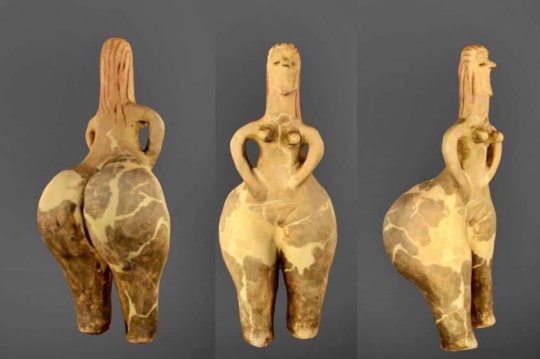
Neolithic Venus figurine called "Red hair goddess", terracotta, from the Starčevo culture 6300 - 5500 BC
11 notes
·
View notes